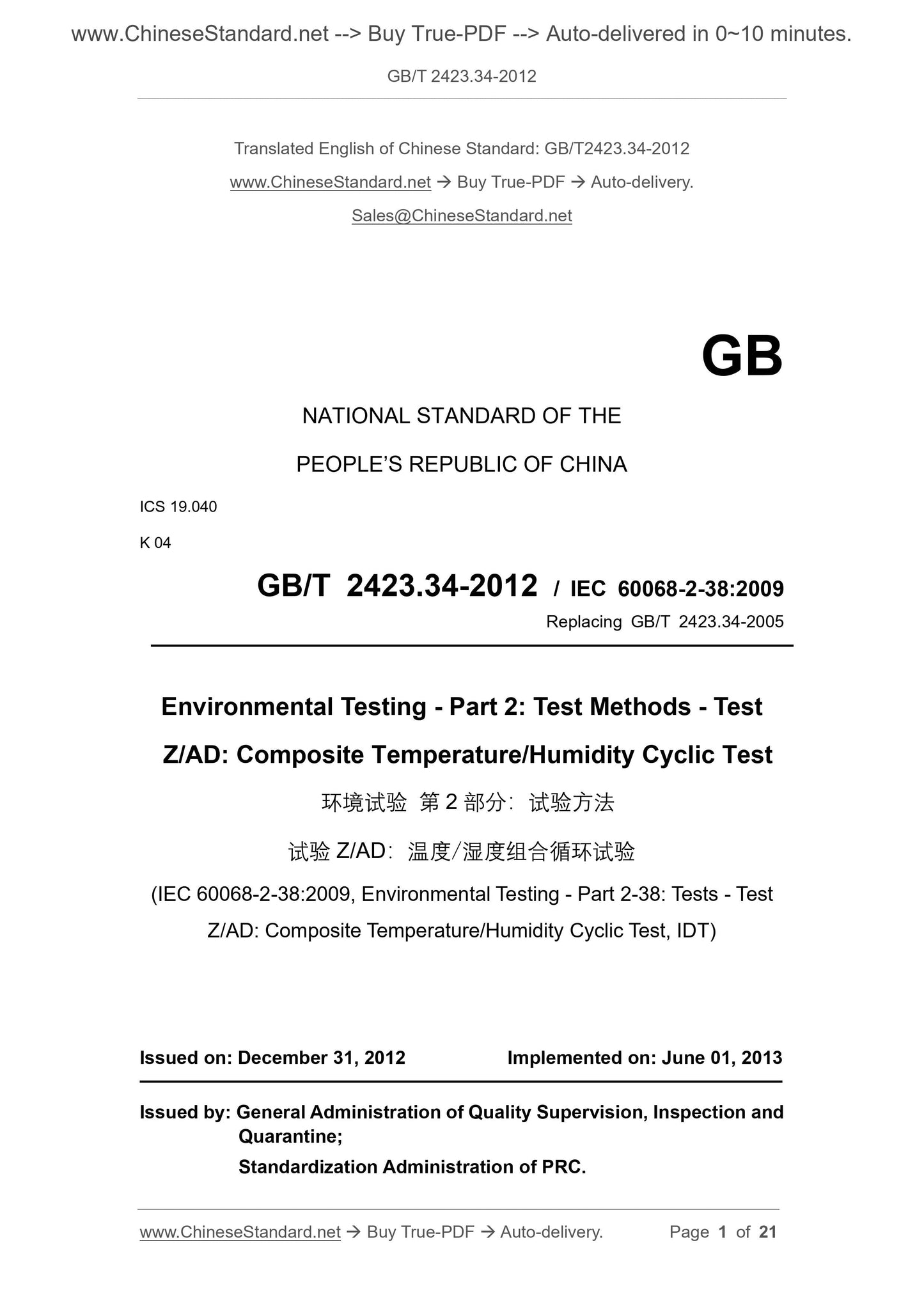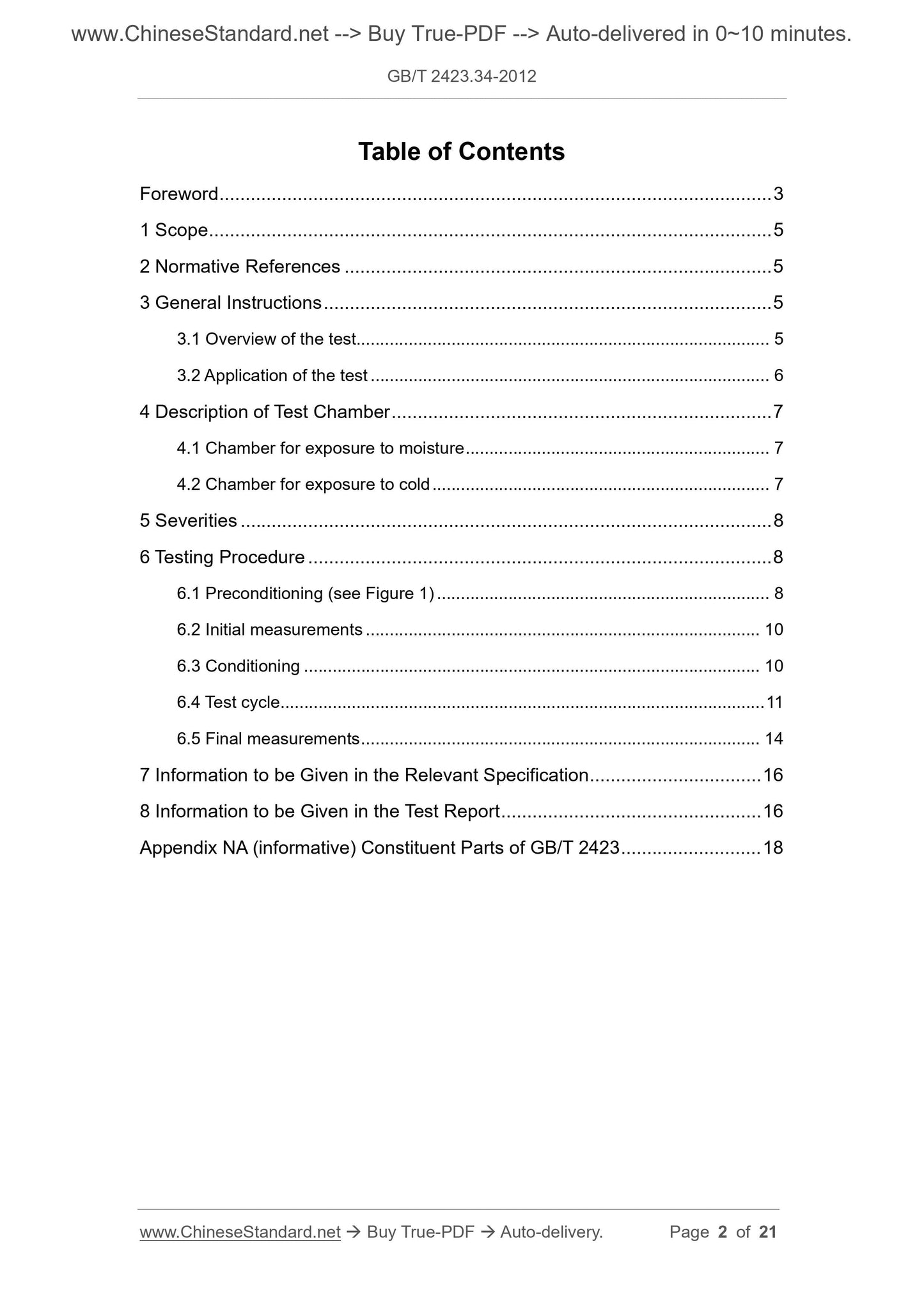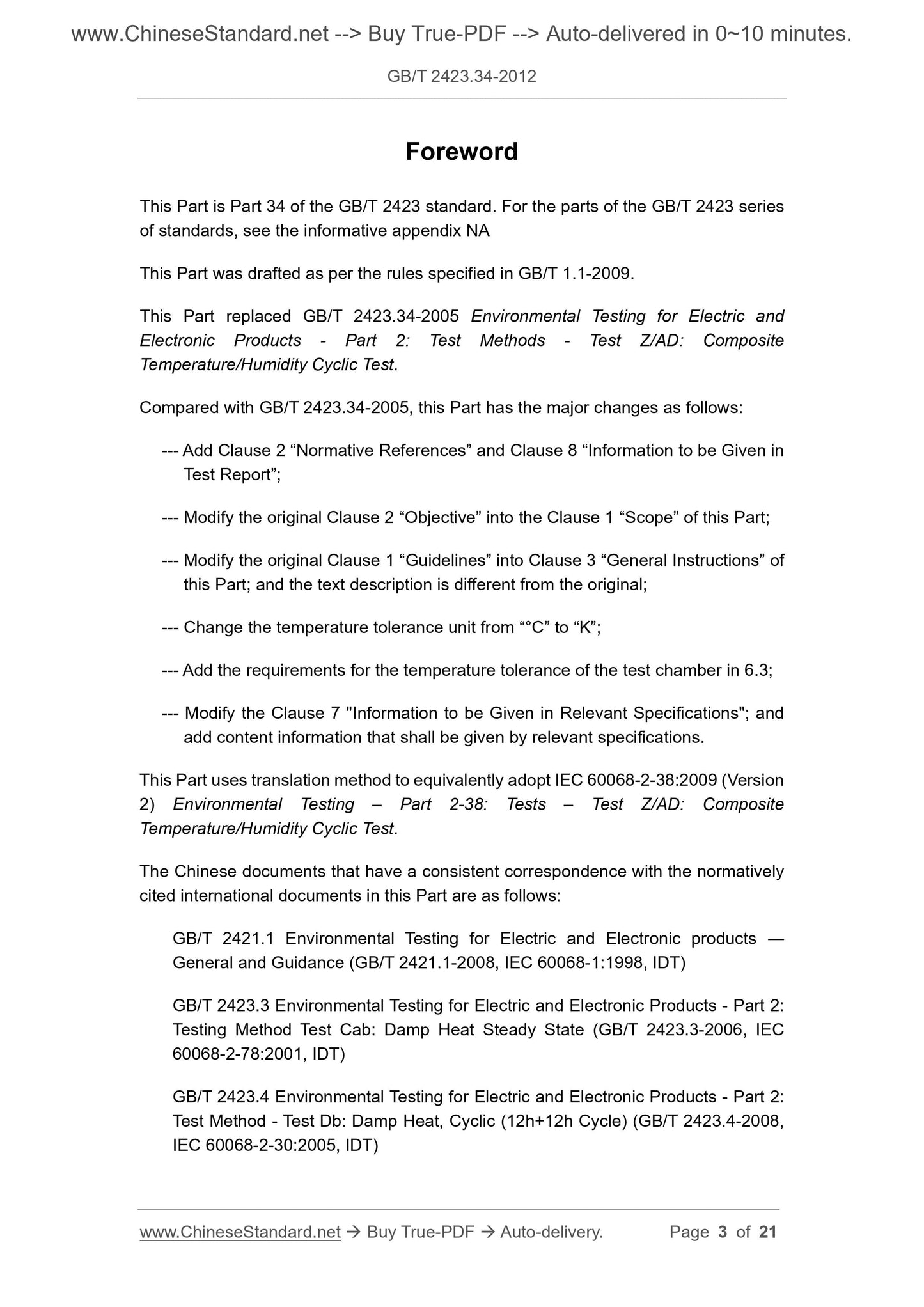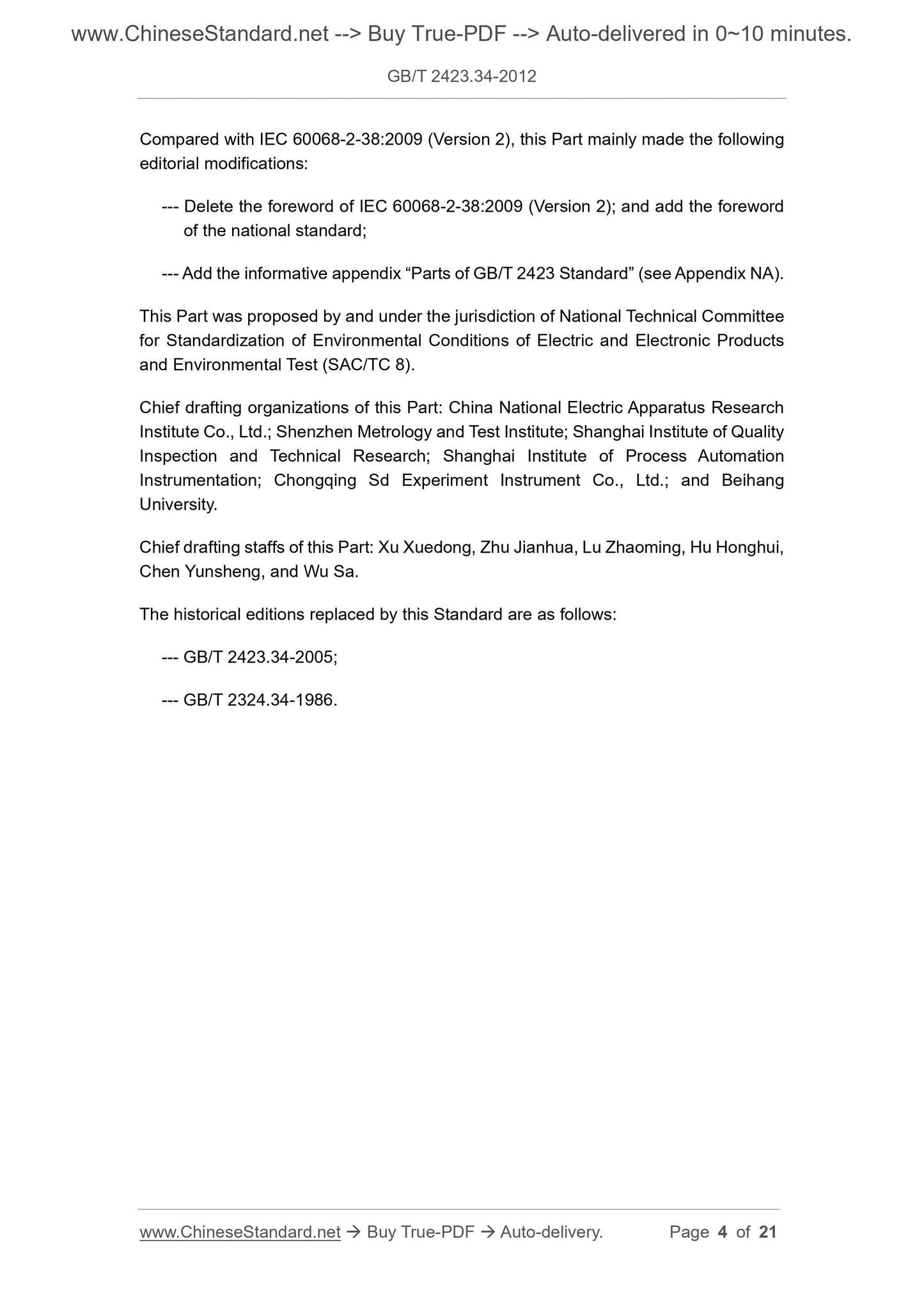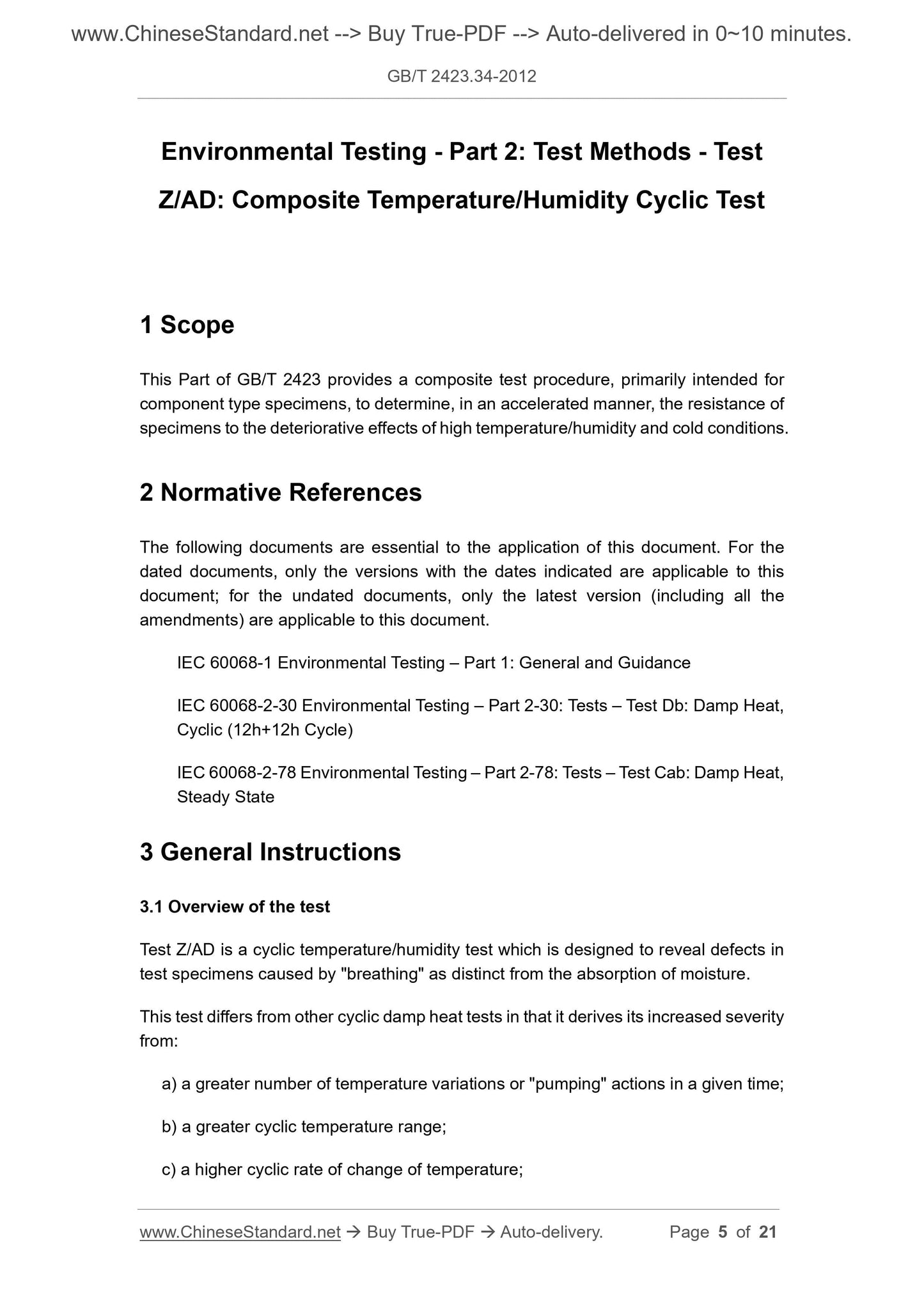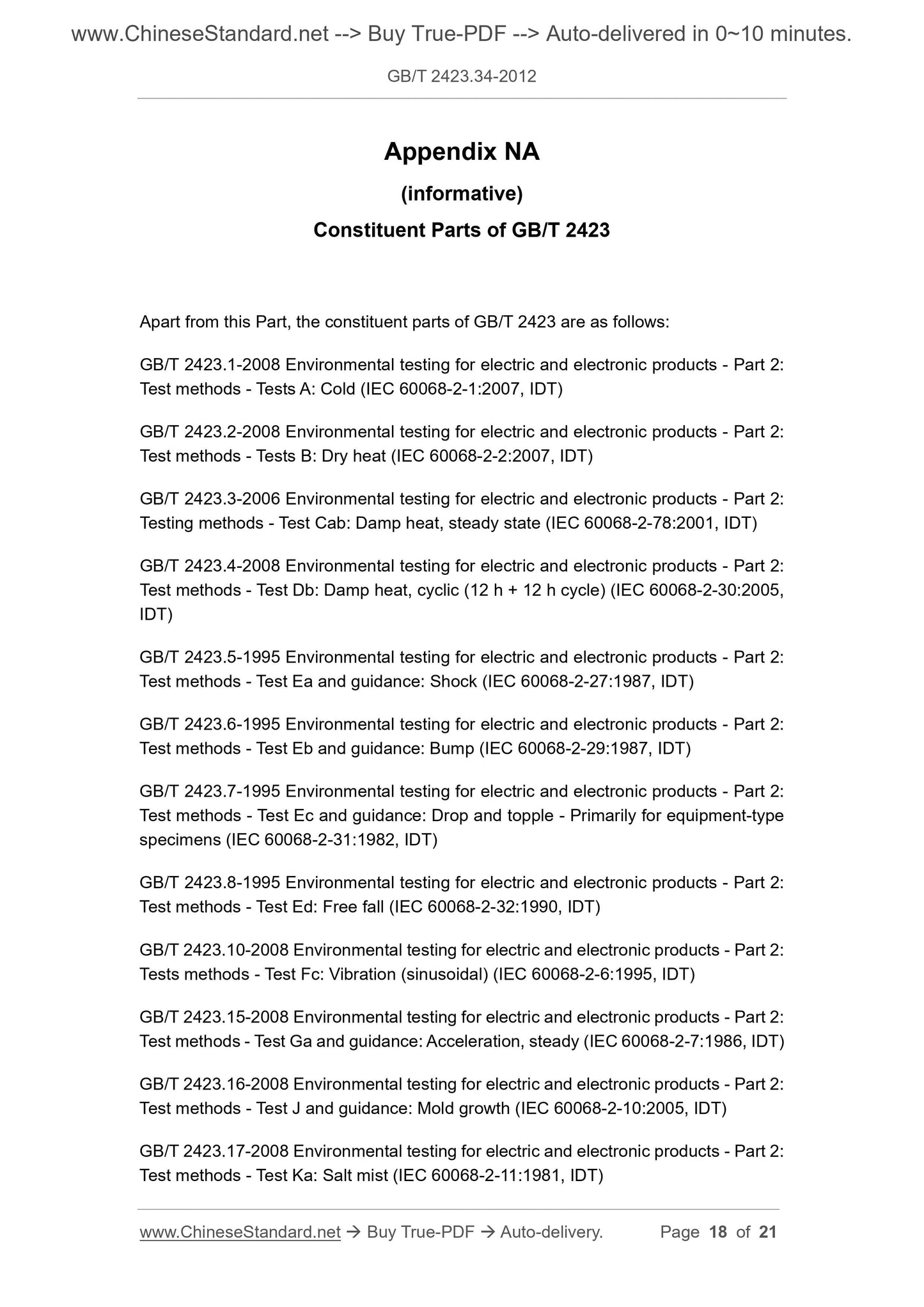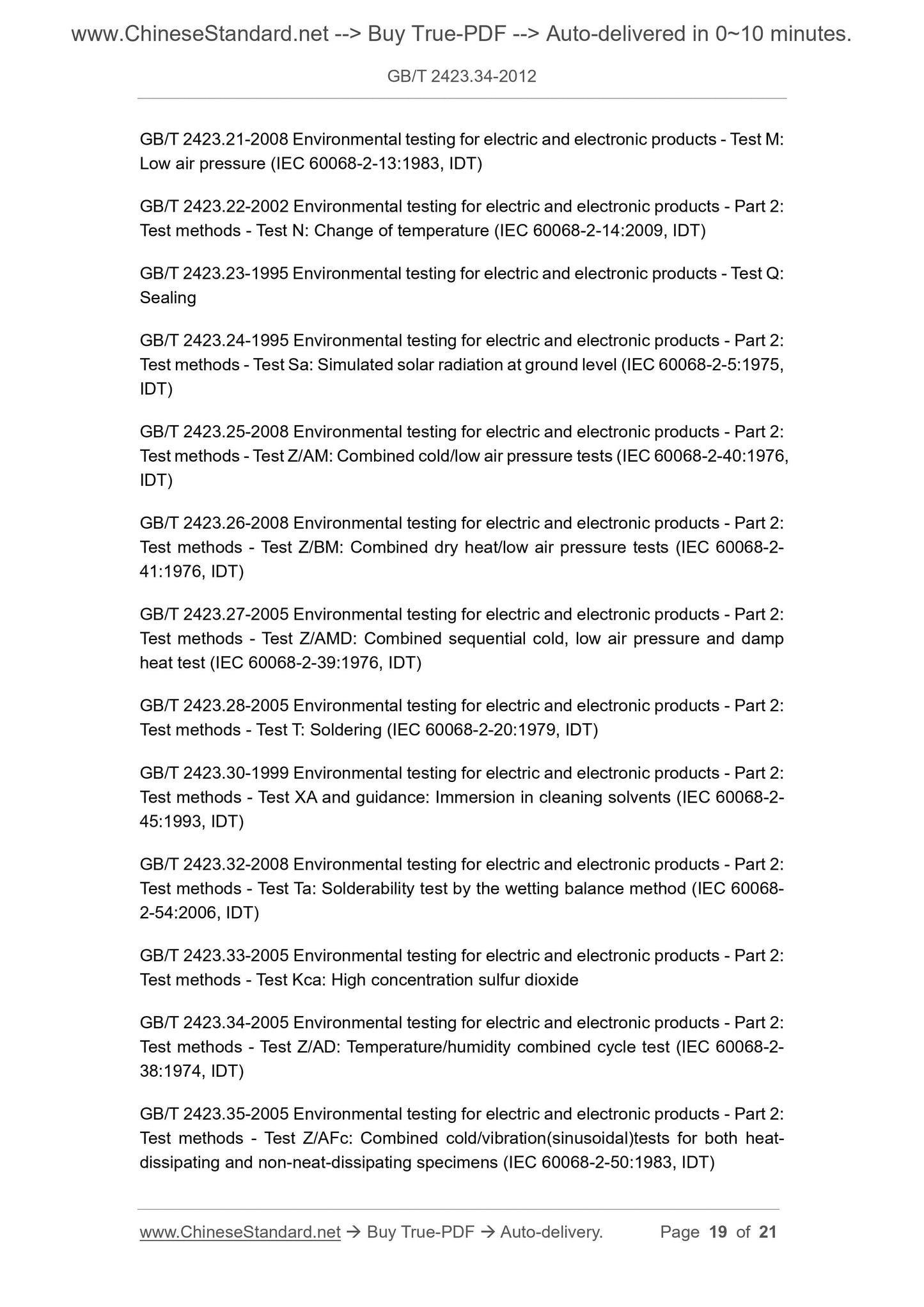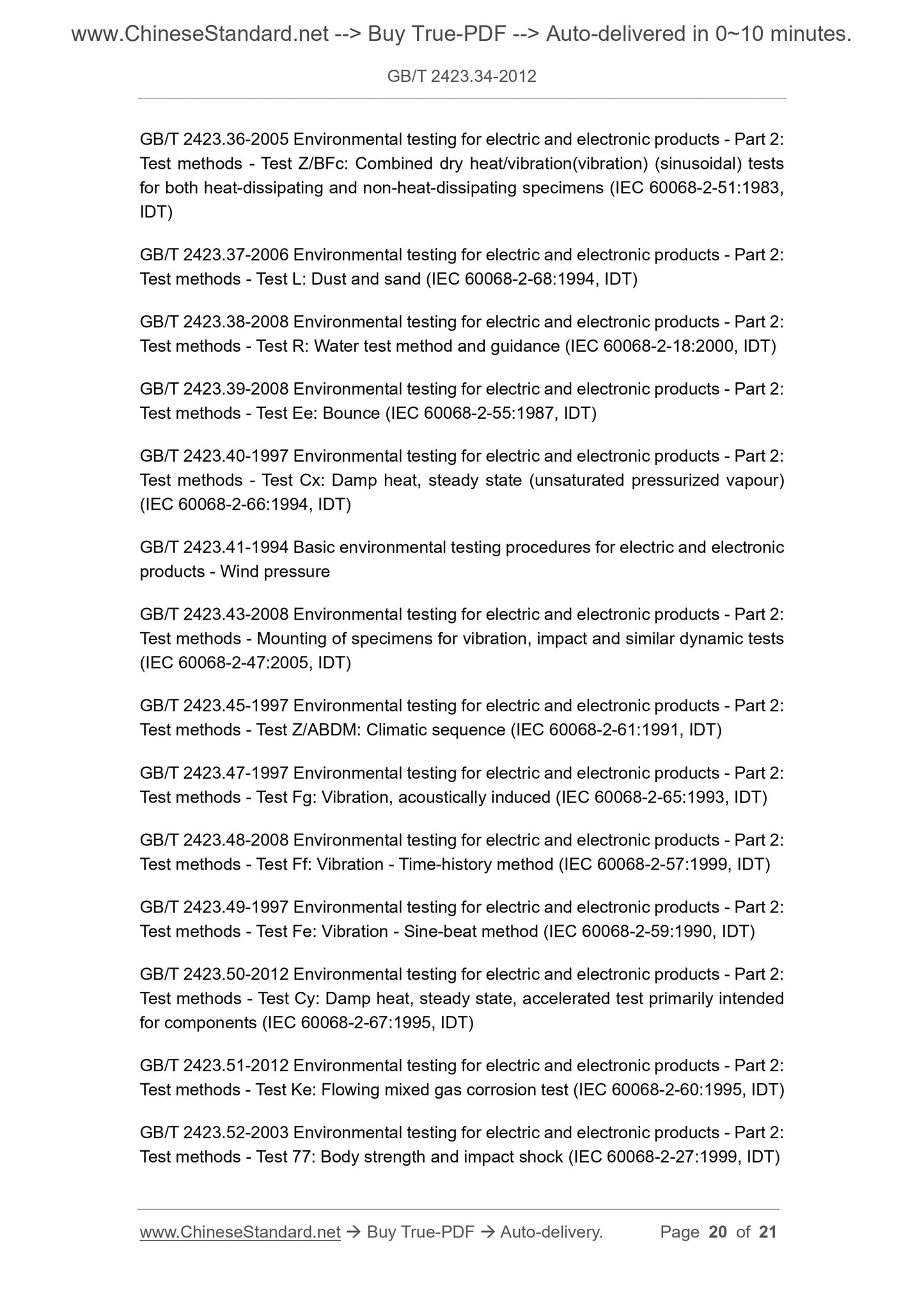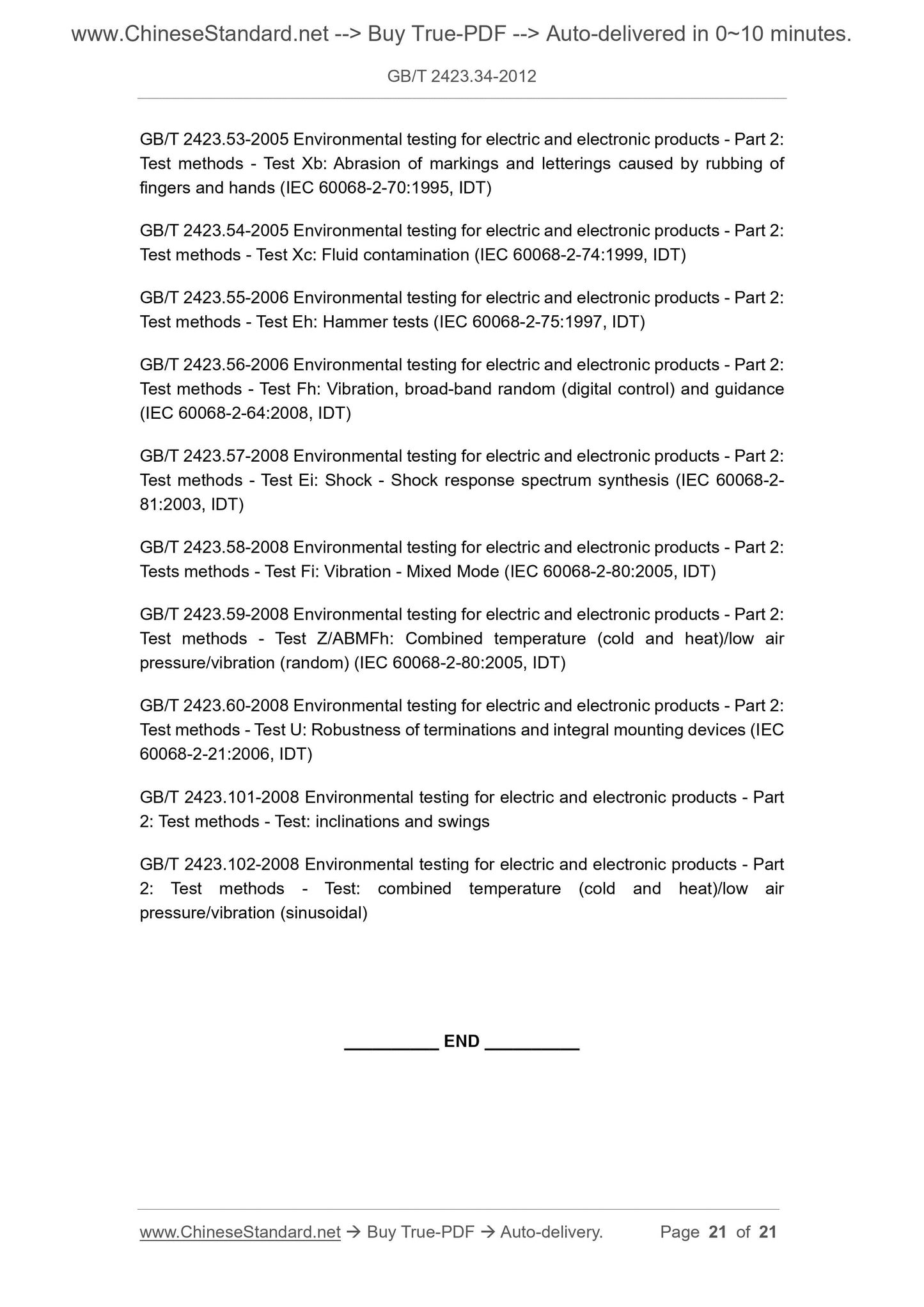1
/
of
9
PayPal, credit cards. Download editable-PDF and invoice in 1 second!
GB/T 2423.34-2012 English PDF (GB/T2423.34-2012)
GB/T 2423.34-2012 English PDF (GB/T2423.34-2012)
Regular price
$105.00
Regular price
Sale price
$105.00
Unit price
/
per
Shipping calculated at checkout.
Couldn't load pickup availability
GB/T 2423.34-2012: Environmental testing - Part 2: Test methods - Test Z/AD: Composite temperature / humidity cyclic test
Delivery: 9 seconds. Download (and Email) true-PDF + Invoice.Get Quotation: Click GB/T 2423.34-2012 (Self-service in 1-minute)
Newer / historical versions: GB/T 2423.34-2012
Preview True-PDF
Scope
This part of GB/T 2423 provides a combined test method, mainly used for component test samples, which is determined by acceleration.The test sample was tolerated under the conditions of high temperature/high humidity and low temperature conditions.
Basic Data
| Standard ID | GB/T 2423.34-2012 (GB/T2423.34-2012) |
| Description (Translated English) | Environmental testing - Part 2: Test methods - Test Z/AD: Composite temperature / humidity cyclic test |
| Sector / Industry | National Standard (Recommended) |
| Classification of Chinese Standard | K04 |
| Classification of International Standard | 19.040 |
| Word Count Estimation | 15,167 |
| Older Standard (superseded by this standard) | GB/T 2423.34-2005 |
| Quoted Standard | IEC 60068-1; IEC 60068-2-30; IEC 60068-2-78 |
| Adopted Standard | IEC 60068-2-38-2009, IDT |
| Regulation (derived from) | National Standards Bulletin No. 41 of 2012 |
| Issuing agency(ies) | General Administration of Quality Supervision, Inspection and Quarantine of the People's Republic of China, Standardization Administration of the People's Republic of China |
| Summary | This standard specifies a combination of test methods, mainly for components like test sample, in an accelerated manner to determine the test sample at a high temperature/high humidity and low temperature tolerance under conditions deteriorated performanc |
Share
